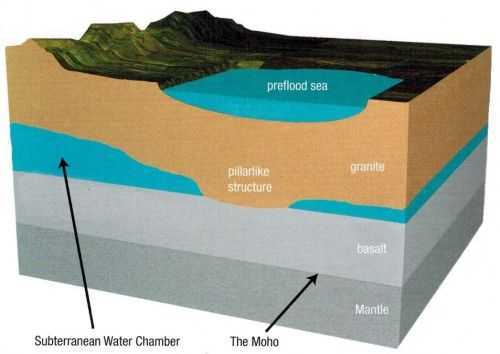Anybody got a diagram of the set up before detonation? I’m not finding any with the article.
I am also thinking about the differences between a pressure cooker (with regular use, or pan-in-pan, and the problem of different substances staying separate within the pan but without a barrier), a water cannon, a gun and a space shuttle.
A diagram of the concept of earth involved would help.
[edit — ok I found this image:

Which is not all that helpful.
I checked on the temperature of Earth’s Mantle, which currently varies between 1000C (1273 Kelvin) near the crust and 3700C (3973 Kelvin) near the core.
I wonder where the additional energy would come from to heat the water enough expell asteroid sized chunks of pillars.
I wonder how much of that additional energy disappated into the outer crust and what effect that would have had things on the surface.
How long did the pressure take to build and what effects did it have on other parts of the planet or atmosphere? How hot and turbulent was it, before detonation and how did that effect living things in particular. Why is there no record of it, assuming there the heat just below the surface made a difference?
I wonder how the earth’s crust didn’t develop stress fractures that released the water pressure more slowly, before detonation could occur — still thinking about my pressure cooker.
I wonder what filled the void created by the loss of mass of water and pillar chunks? Are there enormous, gaping holes between the earth’s crust and the mantle? I mean, an asteroid belt has a lot of mass! What filled it in, if anything?
I’m sure I haven’t even scratched the surface of reasonable questions a school kid could ask.
In the image I found there is also a nice layer of basalt insulating the water from the mantle.
The image I found doesn’t show if there are vents for the subterranean water, and if so how many or how big. So far this is sounding like pan in pan pressure cooking.
